“There is no such thing as bad weather, only inappropriate clothing,” said my son’s preschool teacher many years ago during a particularly foul Boston winter. At the time, bundling up my three-year-old like the Michelin Man, I nodded in agreement. Now that I am living the life of a perpetual traveler, I am not so sure I agree.
Having spent the prior three weeks in Patagonia, where we expected, planned for, and got highly changeable autumn weather, we were looking forward to heading 800 miles north (about the distance from Washington, D.C., to Tampa, Florida), where we hoped to find more moderate temperatures and stable conditions. Our plan was to tour the archipelago of Chiloé with one of our kids and her partner. We hoped for sun despite having read that Chiloé is among the wettest places in the country, averaging 60 inches of rain a year, with just an average of two blue sky days during April, the other 28 being overcast or rainy. So we made sure to have our rain gear close at hand as we crossed over to the main island on a 15-minute car ferry at the beginning of our week-long road trip.
On our first night, temperatures hovered in the low 40s and our party hovered around the space heater in our Airbnb. But the next day we decided to bundle up and venture out in search of penguins. There is a craggy rock off the big island where Magellenic and Humboldt penguins encamp each summer to reunite with their life partner, hatch a chick or two, and prepare for their return to the sea for the winter months. Sadly for us, the birds adhere to a strict schedule and they vacate their summer homes by the last day of March. Not a single slacker among the flock, all had departed by the time we arrived on the afternoon of March 31st. Instead, the captain of our small but stable motorboat rode the sizable swells into the wide ocean bay in search of whales, dolphins, seals, and sea lions. We bobbed around listlessly for nearly an hour until the crackle of a voice on his radio alerted us that another nearby boat had spotted a whale. Quickly, we motored in their direction and were treated to an exuberant display of leaping dolphins, sea lions on the hunt, and one humpback whale who flapped his fin in the air while making quick work of a school of fish. I have never been so close to a whale in the wild and it was both thrilling and upsetting. I can only imagine the negative impact we were having on the feeding animals by getting so close to them with a noisy engine. Apparently regulations preventing that kind of proximity don’t exist (or are routinely ignored) in Chile.
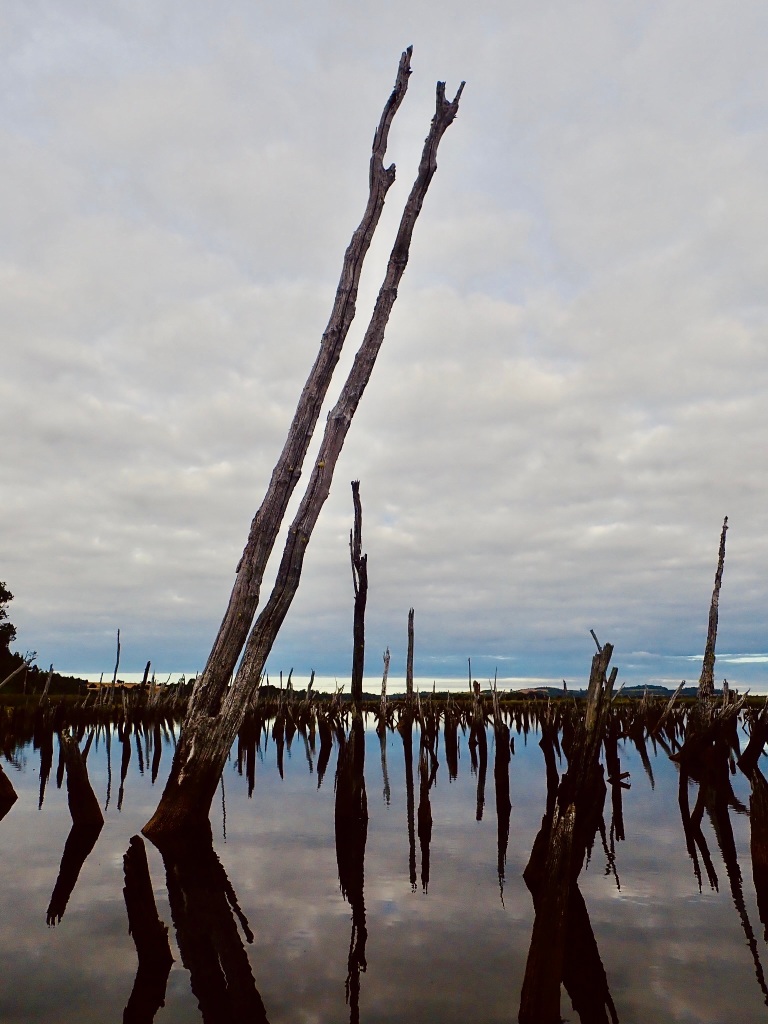
The following afternoon, we drove a winding gravel road to Chepu on the wilder, wetter, unprotected west coast of the island. Our intention was to take a dawn kayak trip to see the Sunken Forest. This eerie coastal river was formed on May 22, 1960, when the largest earthquake in modern history (9.5 on the Richter Scale!) struck the Chilean coast, causing the land to subduct (drop) nearly seven feet and prompting a tsunami upwards of 80 feet high to surge inland, destroying the trees and farmlands and turning the landscape into a waterscape. We checked into our cabin overlooking the river’s mouth and took a look at the weather forecast. Cold rain expected overnight and through the following day, heavy at times with strong winds. Not ideal for kayaking. We made a quick adjustment, rented the kayaks before sunset, and paddled our way through what used to be the forest, peering down into the briny water to see ghostly trunks and branches.
True to the predictions, the weather took a turn for the worse. Our wooden cabin shook and moaned in the hurricane-force gusts (80 mph.), the ocean water pushed its way up the river, creating white caps and storm surge, and rain was driven sideways, slamming against the window panes. We made a run for the quincho (common dining/gathering place) where, thankfully, the property owners had a fire roaring in the wood stove. Then the power went out.
Our plan was to head to the capital city of Castro on the lee side of the island, and we used a break in the storm to carefully make our way there in our rental car. It turned out that the storm had knocked over trees all over the island and power lines were down, roads were blocked, and structures damaged. Without power in our AirBnB, we had no heat, but we could light the gas stove for cooking. Shivering, we made a pot of rice and lentils, put on all our warmest layers, illuminated the dining table with a flashlight, ate hastily, and crawled under the bedcovers. Happily, some time before first light the power was restored; unhappily, later in the day a breach in the town’s water supply was discovered and we found ourselves without running water. Unwashed and uncomfortable, we called an audible and beat a hasty retreat back to the mainland. Chiloé’s weather had gotten the better of us and no amount of “appropriate clothing” was going to improve our experience of the place.
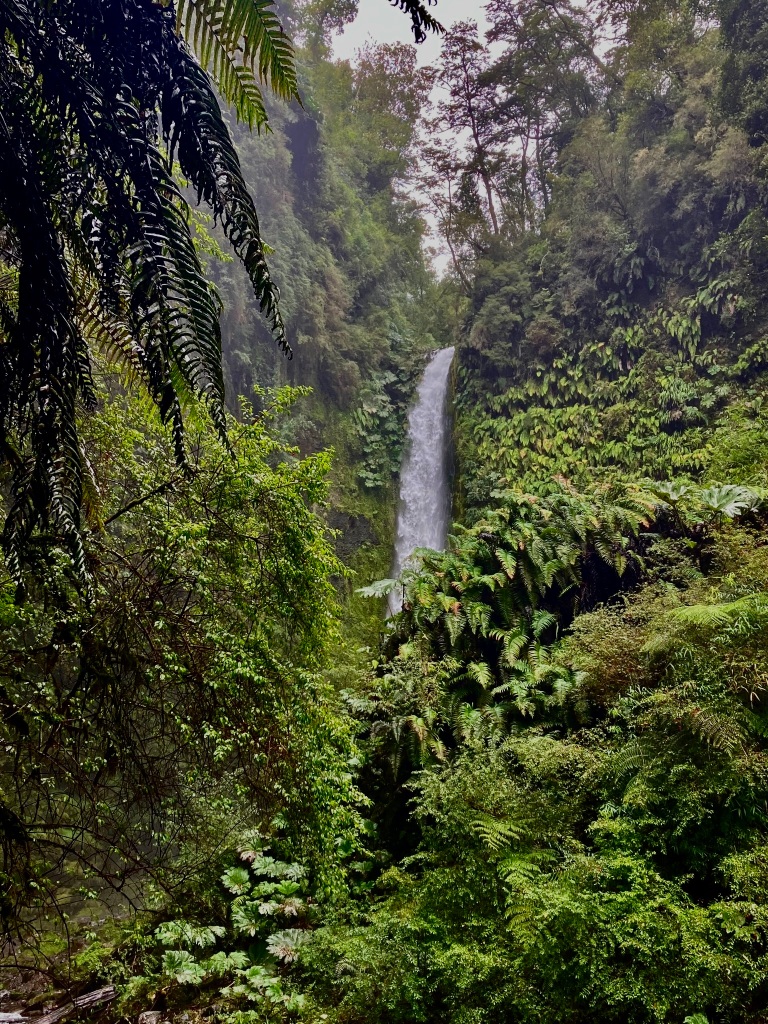
Back in the land of lakes and volcanoes, we were fortunate to have one day of spectacular weather, which we made the most of by hiking through a lush canyon to a waterfall and then up the arid, rock-strewn cone of Volcano Osorno, where we were rewarded with wide-open views of the Andes mountains and nearby lakes and rivers. This bonus day in Puerto Varas, seeing places we hadn’t expected to see under perfect blue skies, shows one of the benefits of staying flexible when conditions turn against us, and demonstrates once again how much weather affects our enjoyment of a place. Chiloé? Brrr. Puerto Varas? Ahh.
One of the unique features of Chile is its length. What that means in terms of weather is that you can drive or fly just a few hours and be in a completely different ecosystem. After saying farewell to our visitors, Al and I flew another 800 miles north to the area known as Norte Chico. Getting out of the taxi at our lodging in the town of Vicuña we were hit with the dry heat of a desert. We quickly peeled off jackets, fleeces, long pants, wool hats and socks and dug out our long-buried shorts from the depths of our luggage. Suddenly we needed sunscreen on skin that barely remembered what being exposed felt like.
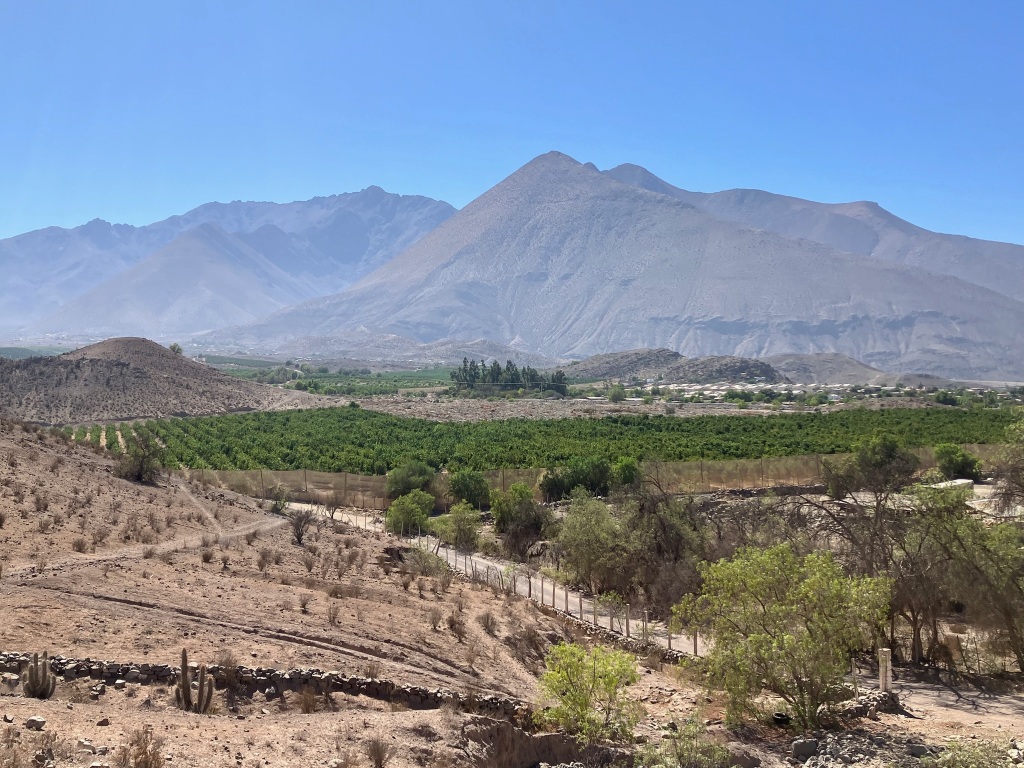
We went for a hike among the cacti and lizards, up and down dusty trails, and felt the sweat dry salty on our faces. What a welcome contrast. Norte Chico is home to the Elqui Valley, one of the primary grape-growing regions in the country. This is the zone from which all of Chile’s pisco, a grape-based spirit, is made. Here one can tour distilleries, learn the history and process for how it’s made, and best of all taste dozens of different kinds of pisco. Locals pride themselves on being the “true” source of pisco, a long-disputed claim between Chile and Peru. As far as I am concerned, so long as they keep making it, I don’t care who holds the title of authenticity.
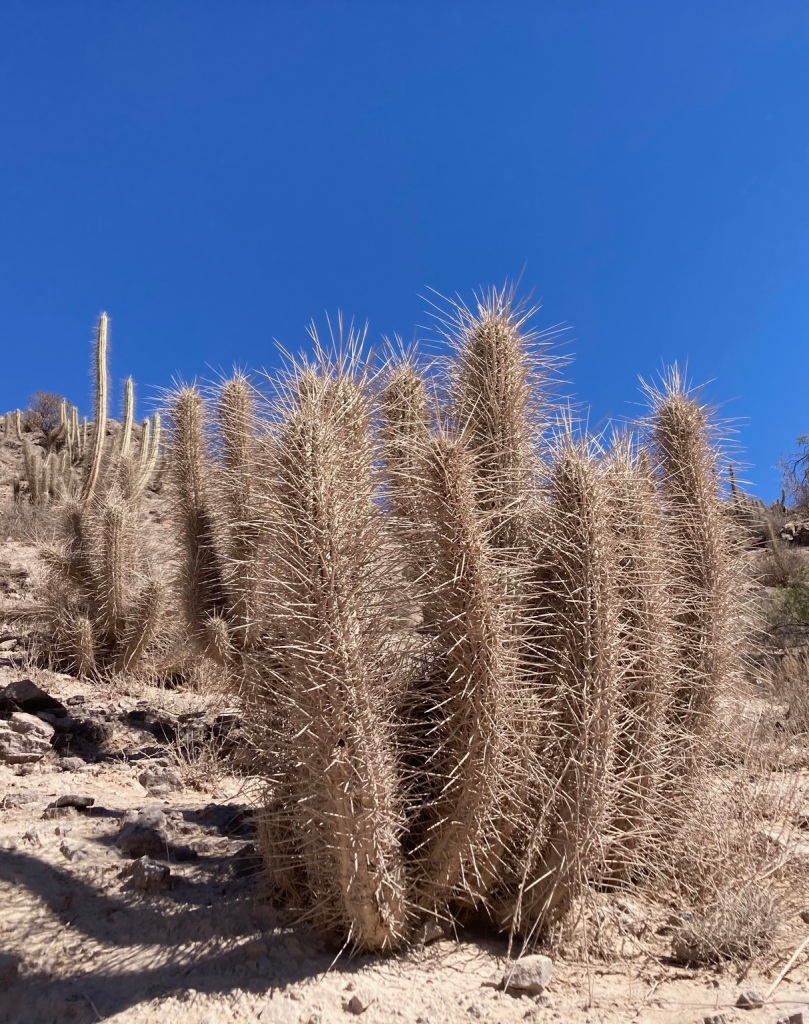
Pisco requires grapes and grapes require water—lots of water. Chile is ranked as one of the most water-stressed countries in the world, with a risk that it could run out of its water supply by 2040 according to a June 2022 article in The Guardian. It is entering its 15th year of a “mega-drought”. You might not realize this if you are only traveling in the south but here in the north the effects are stark. Some vineyards once lush with grape vines now sit fallow and barren; others hide from the relentless sun under fabric shades. If you see green in this valley, chances are it’s a vineyard destined for pisco and watered by a private well drilled deep into the aquifer. Our first taxi driver, a man old enough to recall better times, gave us an earful (in rapid Chilean Spanish) detailing his gripes against the government and big industry for their greed and mismanagement of water. We felt more than a little guilty for reveling in the warm, dry air, guarantee of clear skies, and dramatic rocky landscape, while knowing the challenges faced here by the residents due to water scarcity.
One small benefit of the more than 300 cloudless days per year (closer to 360 now, as a result of climate change) is that the night skies are a wonder to behold. The area is famous for being one of the best places on Earth to stargaze, with little light pollution, no clouds, and an altitude of over 4,000 feet above sea level. There are numerous observatories that offer night sky viewing tours but honestly, you don’t need any fancy equipment, simply going outside after dark and looking up will blow your mind.
In just a few days we will take another short flight—yet another 800-mile trip, this time southeast, across the Andes to Argentina. In Buenos Aires, the forecast calls for rain, rain, and more rain. So once again I will dig my rain gear out of my luggage and arrange my sightseeing accordingly. Sure, maybe there is “no bad weather”, but considering that we are free to design our travels to our liking, maybe going forward I should “go where the climate suits my clothes” rather than the other way around.
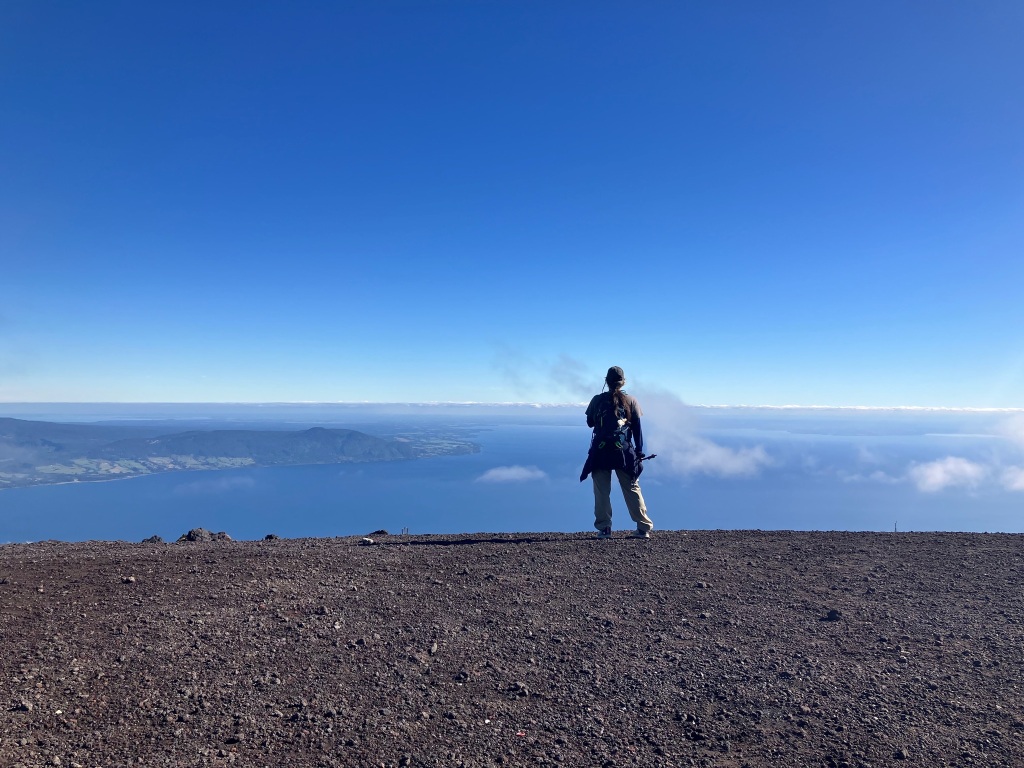
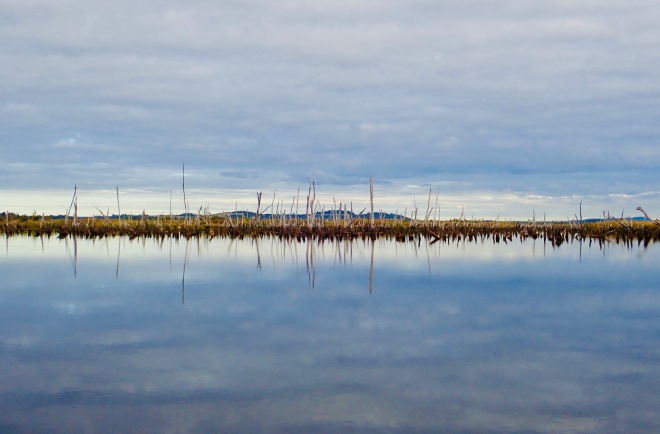
Hi, Rachel,
As usual, your amazing travel descriptions do not disappoint. You and Alan are proving that there’s value in being ‘sempre Gumby’, and making best use of the weather, clothing that you have, and your resolve.
can’t wait to hear more!
Leslie
LikeLiked by 1 person
I love the image of being like Gumby! Al can be Pokey 🙂
Thanks for reading and sharing your thoughts.
LikeLike
Thank you Rachel! Wonderful, informative commentary…Stunning photos! Living vicariously through you & Al.
Be well, stay safe, love you!
Marti
LikeLiked by 1 person
Although the weather has often been brutal, what a wealth of experiences you’ve had. Thanks for sharing them.
LikeLiked by 1 person
I had to go put on a fleece while I read this. Thanks for the vivid description of your amazing experiences.
LikeLike
Ha ha. That is saying something, given where you reside. Thanks for continuing to read our blog.
LikeLike
Me encanta tener que mirar un mapa de Chile cada vez que leo vuestro blog. Aprendo muchísimo.
LikeLike
Qué bacán! Es un país muy diverso, lindo, y largo. He aprendido mucho en los meses que hemos estado aquí.
LikeLike
Goin’ where the weather suits my clothes. From Everybody’s Talkin’ as sung by Harry Nilson in Midnight Cowboy. My long time favourite song line.
LikeLike
Also sung by the Grateful Dead in “Goin’ down the road feelin’ bad” which is where I first heard it. If you do a search for that line you will find that it has been used by many different artists. I am glad you recognized it from your own cultural context. Words to live by.
LikeLiked by 1 person
The weather is the boss! Whether you sail or travel overland. If you pass by Santiago – which you might since you are flying to Buenos Aires next – let us know. We are here and will be for a few more days. It would be cool to meet up! 🙂
LikeLike
Your ability to be curious in the face of any and all weather conditions is key to all that you are experiencing. I begin smiling when I read your first sentence and don’t stop smiling until I’ve read the end of the blog. Thanks for your engaging news.
Big hugs,
Momo
LikeLike
Thanks Mom. It was great to have you and Dad on my team when it looked like Team Bacteria was going to crush Team Rachel.
LikeLike